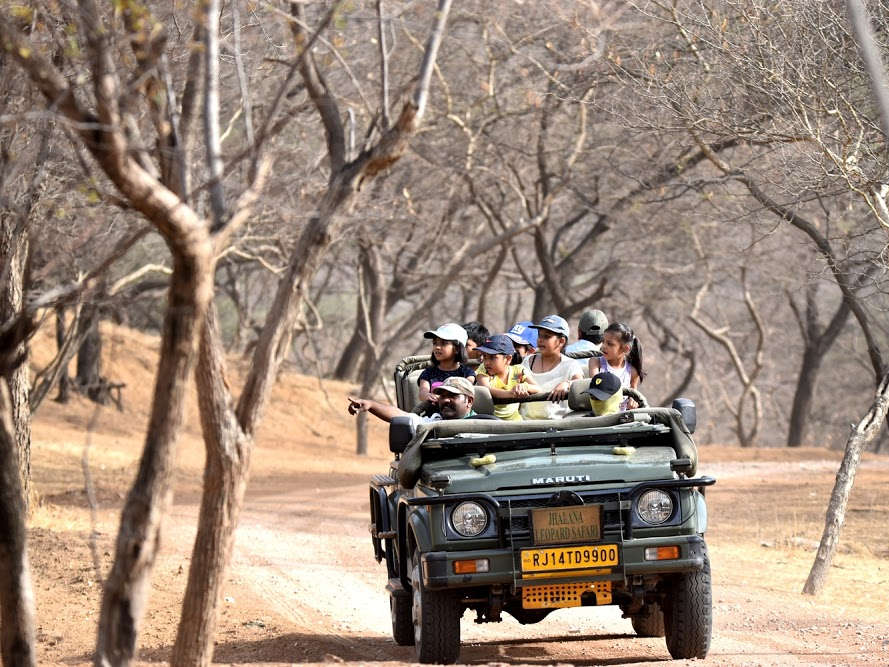Into the Wild: Discover the Thrill of Jhalana Leopard Safari


Nestled on the eastern fringes of Jaipur, the Jhalana Leopard Safari trip has quietly transformed into one of India’s most fascinating wildlife experiences. Once a royal hunting ground, Jhalana has evolved into a thriving leopard conservation zone, offering visitors a rare chance to observe these elusive predators in their natural habitat. Unlike the more crowded national parks, Jhalana provides an intimate encounter with the wild, making it a hidden gem for wildlife enthusiasts, photographers, and nature lovers.
A Unique Leopard Haven
Spread over approximately 23 square kilometers, the Jhalana Leopard Reserve boasts a surprisingly high density of leopards considering its proximity to urban Jaipur. Experts from the Rajasthan Forest Department estimate there are around 30-35 leopards in the area—a significant number for such a compact zone. This high density improves the chances of sightings, making Jhalana an attractive alternative to larger reserves like Ranthambhore or Sariska.
One of the most compelling features of Jhalana is how it showcases the delicate balance between urban development and wildlife conservation. Towering apartment blocks and cityscapes form the backdrop to this scrubland forest, offering a stark reminder of how wild spaces persist amid modern life.
The Safari Experience
Visitors embark on the safari in open 4x4 gypsy vehicles accompanied by trained naturalists who share valuable insights into the ecosystem. Each safari lasts about 2.5 hours, typically scheduled in two slots: early morning and late afternoon, when wildlife activity peaks.
While leopards remain the star attraction, Jhalana’s biodiversity extends far beyond its spotted residents. Safari-goers might encounter desert foxes, striped hyenas, nilgai (blue bulls), Indian palm civets, and a vibrant array of birdlife. Birdwatchers will delight in sightings of species such as the Indian pitta, spotted owlet, peafowl, and various raptors circling the skies.
Photographers praise Jhalana for its unique light conditions, especially during sunrise or sunset safaris. The dry deciduous forest, dotted with dhok trees and thorny bushes, creates striking contrasts, perfect for capturing the spotted rosettes of leopards camouflaged among rocks and vegetation.
Conservation Efforts and Sustainable Tourism
Jhalana’s emergence as a leopard reserve underscores Rajasthan’s commitment to conservation. Authorities have implemented strict regulations to protect the habitat, control tourist numbers, and minimize human-wildlife conflict.
A 2022 report by the Wildlife Institute of India highlighted Jhalana as a model for urban wildlife conservation, emphasizing the importance of maintaining wildlife corridors and habitat connectivity. Such initiatives help leopards roam safely and avoid venturing into city areas, reducing encounters that might endanger both animals and humans.
Revenue generated from safari tourism contributes to habitat management and community development, aligning conservation with economic benefits for local communities. This sustainable approach not only preserves biodiversity but also fosters local support for wildlife protection.
Planning Your Visit
For travelers eager to explore Jhalana, planning ensures a smooth experience. Here are some practical tips:
Best Time to Visit: October to March offers pleasant weather and higher chances of wildlife sightings. However, leopards can be spotted year-round.
Safari Booking: The Rajasthan Forest Department manages bookings through its official website. It’s advisable to secure slots in advance, particularly during weekends and holidays.
Clothing: Wear muted colors like greens, browns, or beige to blend into the environment and avoid startling wildlife. Early mornings can be chilly, so layered clothing is useful.
Photography Equipment: Telephoto lenses (200mm or higher) help capture wildlife from a safe distance without disturbing animals.
Respect Wildlife: Maintain silence during the safari, follow the naturalist’s instructions, and avoid littering to help preserve the reserve’s delicate ecosystem.
Why Jhalana Stands Out
The true magic of Jhalana lies in its juxtaposition of wilderness and urban sprawl. Few places offer the thrill of seeing a leopard gracefully cross a dusty trail while city traffic hums in the distance. The reserve demonstrates how conservation can coexist alongside urban growth, serving as an inspiring example for other cities facing similar challenges.
Travel publications such as Outlook Traveller and The Hindu have featured Jhalana as one of Rajasthan’s rising stars in wildlife tourism. Unlike the more commercialized safaris, Jhalana remains less crowded, allowing for quieter, more personal experiences—a quality many seasoned wildlife travelers deeply appreciate.
Moreover, for visitors constrained by time, Jhalana’s location in Jaipur makes it easy to incorporate a safari into a broader itinerary covering the Pink City’s forts, palaces, and markets. In just a few hours, one can step from the bustle of urban streets into a world ruled by stealthy predators and rustling leaves.
Final Thoughts
Jhalana Leopard Safari is more than just an adventure; it’s a window into the resilience of nature, the wonders of biodiversity, and the possibility of coexistence between wild creatures and urban development. For those seeking a wildlife encounter that’s both thrilling and intimate, Jhalana stands as an unforgettable destination, waiting to reveal its secrets to those willing to venture into the wild.
Leave a comment